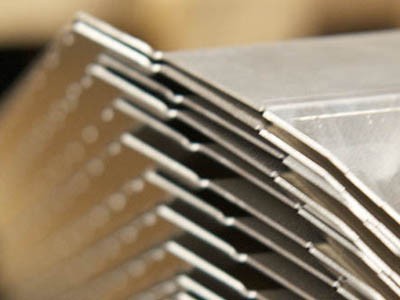
In metals used for precision sheet metal fabrication, both malleability and ductility are essential. To understand why this is the case, it helps to learn what these two terms mean. Malleability is the property of a material that changes its form when compressed. For instance, these types of metals can get rolled or beaten into sheets. Ductility is when a material can stretch under tensile strength without compromising on quality. Metals with ductility can be made into wires.
In other words, highly malleable and ductile metals are easy to form and reshape using compression and stretching methods. For the sheet metal fabrication process, a workpiece that stretches and forms is highly beneficial. With these two qualities, a top manufacturing company expands on its capabilities in that it can produce more intricate
parts and components in response to ever-changing customer demand.
Malleability of Metals: When metals like copper, tin, lead, and steel are malleable or ductile, they become almost dough-like. That makes it easier for the manufacturing company to roll them out, force them through different machinery, and even bring them back to their original dough-like state. Best of all, the various fabrication processes do not break the continuity of the particles in the metal.
One common question that arises is whether steel is malleable. The answer is yes, steel is indeed malleable. It can be easily shaped and formed into different structures, making it highly versatile for use in construction, manufacturing, and other industries.
The importance of malleability in metals cannot be overstated. Firstly, it allows for the fabrication of complex and intricate designs with ease. Malleable sheet metal can be transformed into various products such as car bodies, aircraft parts, and household appliances.
Additionally, malleability enhances the ductility of metals. Ductility refers to the ability of a material to stretch without breaking when subjected to tensile forces. Steel exhibits both malleability and ductility, making it an ideal material for structural applications where strength and flexibility are required.
Moreover, the malleability of metals enables them to undergo processes like forging and shaping at high temperatures. This allows manufacturers to create custom components with precise dimensions according to specific requirements.
Consider gold as a prime example. This precious metal is both malleable and ductile, making it possible to roll it out extremely thin or draw into a wire. Other metals provide the same advantages. Because of that, they can be used to fabricate virtually any part or component in the shape and thickness specified by the customer without experiencing any damage.
The degree of malleability and ductility of metals varies according to the type of metal used in the sheet metal fabrication process. For instance, while both tin and lead possess these qualities, their level of malleability is higher than their ductility. For that reason, a manufacturer can shape these metals into any form, whether a sheet or pipe. Based on the part or component required by the customer, the expert determines if one of these qualities are more important than another. They then choose the correct material. As a result, the manufacturer can create a broad range of finished products, regardless of how complex or intricate they are.
Trusting the Best
At Weldflow Metal Products, a leading precision sheet metal fabrication manufacturer, our design and engineering team understand how malleability and ductility affect different metals, thereby making it possible for them to provide appropriate recommendations to customers. For information about our company and services, please visit us online or call today to discuss your needs.



